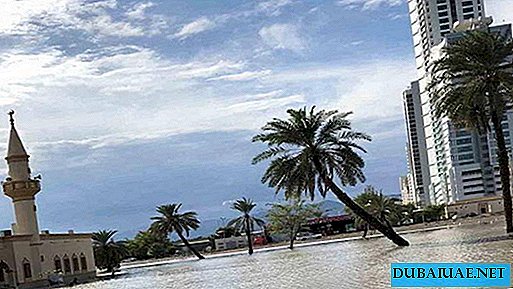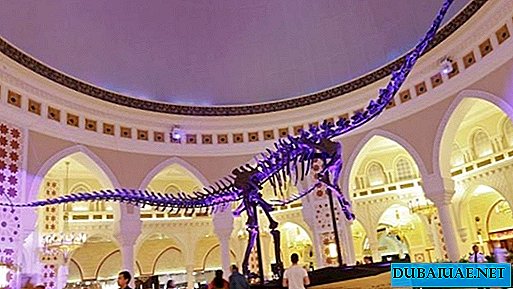She began by taking notes on travels around Nice and its environs, published by us in the magazine Russian Emirates No. 40. We bring to your attention a continuation of this fascinating story, which takes you farther and farther and acquaints with the well-known or completely uncharted territories located on the map Europe in a place called the Cote d'Azur. So, a thoughtful reader, on the road ...

Cliffs, bays, beaches
Leaving behind the picturesque Nice, we continued on. Our road stretched to the village of Turbi, built on a ridge and located higher than the Principality of Monaco and the rocky coast of the sea. From this height one of the most beautiful views of the Mediterranean coast opens towards Italy and the villages of More and Esterel. The village of Turbi gained fame thanks to the "Trophy of Augustus" or the "Alpine Trophy" - a historical monument that marks the highest point of the Julian road. It was built by the Romans in honor of Caesar's nephew, Emperor Octavius Augustus. So his conquests in the Alpine massif were immortalized.
Beyond the hills of the Cote d'Azur, a beautiful road, winding, leads us to the village of Lage, surrounded by olive groves. Here is the famous shrine throughout Nice - the Altar of the Madonna, built in 1656. The walls of the church and galleries are covered with ex-voto facing God, which are touched by their simplicity and naivety. Over the centuries, a great many have accumulated here. The village of Lage, located in a deep mountain valley, attracts fresh coolness, tranquility and serenity.
Crossing the spurs of the mountain range of the Maritime Alps, we find ourselves on the beach of Della Mala in Cap d'Ail. Here, nature is amazing in its beauty - coves, rocks, cave paths saturated with aromas of needles, eucalyptus, sycamore. In the city, we visited the Jean Cocteau open-air theater, decorated with magnificent mosaic paintings by this artist.
Further our path continued, and we headed to the historic village of Eze. Some historians believe that the name of this settlement is connected with the name of the ancient Egyptian goddess Isis, while others believe that it came from the Latin Visia or Avisium, as observation points in the mountains were called in ancient Rome. Amazingly beautiful fortress, built during the time of Caesar, like a huge nest, perches on a cliff 427 meters high above sea level. The ancient village, living in agriculture, in the XIV century was a citadel of Guelphs, later in 1706 the fortress was demolished by order of Louis XIV. The narrow streets that give a picturesque view of the village, climb steeply uphill and lead to the penitent of the penitents in the White and to the Church - monuments that deserve special attention.
In an exotic botanical garden, visitors will see a variety of plants collected here, including cacti. A picturesque path lined with olives and pines descends to the lower "Cornice" - a steep cliff above the seashore.
Beyond the Wolves
Our next stop was Regon Lou ("Wolf Gorge"). Looking at the calm, unhurried course of Lu (the Wolf River), it is hard to imagine that a water stream, making its way through the rocks, had to pave the way along the gorge among the high cliffs before moving its waters to the blue expanses of the sea. This gorge has become one of the historical sights of the natural landscape of Provence. The Lu River originates in the alpine zone, at an altitude of 1300 meters. Many picturesque villages are built on the river banks on its way to the sea. At the very beginning of the gorge is the village of Volchiy Most (Pont du Loup), known for its production of canned fruits. Behind it begins the Wolf Gorge - a deep hollow dug by turbulent mountain streams in calcareous rocks. You can get into the gorge bypassing the support pillars and several flights of the viaduct. The gorge, surrounded by steep cliffs in the form of huge cauldrons, is a series of semicircular cascades: one of them is the Kurum cascade, vertically falling from the height of the lime wall; upstream, upon exiting the tunnel, amidst lush vegetation, the river forms a series of cascades called the Wolf Jump.
At the highest point of the ridge, at an altitude of 800 meters, an ancient village of feudalism, Gourdon, settled down. It hangs over an eagle's nest over the Wolf Gorge. The village of Gurdon, once serving as a Saracen fortress, managed to retain in its appearance the charm of past years, peering through the windows of ancient castles, ancient streets, a medieval watchtower of the fourteenth century. The main street of the village leads to a small area from which, like from a balcony, a panoramic panorama of the Cote d'Azur, exceptional in breadth, opens - from Nice to the ridge of Esterel. This place was chosen by hang gliders and skydiving enthusiasts. They soar with bright birds against the azure blue.
The road to Grass
Descending from the top, we found ourselves in the village of Tourettes-sur-Loup, which occupies the slope of the mountain, and its extreme houses form a defensive system, from where a wide panorama opens in the direction of Grasse and Vence. The village has perfectly preserved its original appearance. In the church of the XV century there are paintings by the Leonardo da Vinci school, a triptych by Bray, sculptural images of saints,  made of painted wood and dating back to the 16th century. An impressive square tower is decorated with a balustrade from the time of Louis XIII. Residents of the village of Tourette, located among olive groves, are successfully engaged in the cultivation of flowers: carnations, anemones and violets. Fascinated by the beauty and antiquity of the mountain village, residents from other places come here to present the fruits of their labor at a common holiday: Violet is annually held in Tourette, one of the most prestigious competitions among flower producers of the Cote d'Azur.
made of painted wood and dating back to the 16th century. An impressive square tower is decorated with a balustrade from the time of Louis XIII. Residents of the village of Tourette, located among olive groves, are successfully engaged in the cultivation of flowers: carnations, anemones and violets. Fascinated by the beauty and antiquity of the mountain village, residents from other places come here to present the fruits of their labor at a common holiday: Violet is annually held in Tourette, one of the most prestigious competitions among flower producers of the Cote d'Azur.
At the exit of the village, our road stretched along the mountains. We enjoy beautiful views of the mountain slopes, bathed in radiant light, with cypresses, citrus fruits, vineyards, mimosa bushes and bougainvillea growing on them.
A little later, we were greeted by the friendly and picturesque city of Grass, located in a beautiful place and gained fame as a prestigious resort in the 19th century. For several centuries, the economic life of this city has been determined by the perfume industry: Grass is considered to be the "perfume capital of the world."
The technology of distillation of flower essences was known here in the XIII century, but the production of perfumes on an industrial basis began in the XVI century: during the Medici era, it became fashionable to wear perfumed gloves. Currently, more than 10 thousand tons of flower mass is distilled in Grasse, and the resulting flower oil is used for the manufacture of various essences for the perfume industry. As a tribute to this industry, thanks to which the city became rich and famous, the international Perfume Museum was opened in Grasse. Its exposition in graceful form tells about the addiction that people have been fond of spirits for 700 years.
The old city can be crossed from end to end along narrow winding streets that form intricate obstacles, or bypassed on a rampart, interrupted in some places by steps of transitions. One way or another, you get to Er Square with its arcades, facades of ancient buildings of the XVIII century and magnificent fountains. The Most Important Monument is the Laid Church of Our Lady (Notre Dame du Puy), built in the 12th century and restored in the 17th century. Very close to the cathedral is the garden of Princess Polina, the Cornish city park.
The famous artist Fragonard was born in Grasse in 1732. The museum named after him is located in a luxurious 18th-century mansion owned by the Marquise de Cabris. In the beautiful halls of the museum exhibited paintings of erotic content, once rejected by Madame du Barry, which during the Revolution were hidden by Fragonard in Grasse. Named after Fragonard in Grasse, since 1926, the laboratory of perfumes, eau de toilette and perfumes, in the best traditions of French perfumes. We visited the Fragonard factory, where we got acquainted with the old technologies of perfumery production, and having appreciated the original and exclusive compositions, we created for ourselves our own, one and only unique flavor.
Saint-Paul and the Golden Dove Inn
Leaving Grass, we plunged into the Middle Ages - the city of Saint-Paul-de-Vence. When Saint-Paul entered the royal domain and was directly subordinate to the French monarchs. The first historical references to the city date back to the 10th century, when Romeo and Villeneuve captured it and annexed it to Roquefort. After the death of the Queen, Saint-Paul passes under the command of the Duke of Anjou. Today's Saint-Paul is rich in historical and architectural monuments, among which the Collegiate Church of the Conversion of St. Paul (XII - XIII centuries). This temple contains masterpieces of painting and applied art: the most beautiful image of the Virgin Mary, made of silver, the work of 13th-century masters, a cross for church processions of the 14th century, Tintoretto's painting "St. Catherine" and a reliquary with the relics of St. Antoine, the work of the 15th century.
On Bolshaya Street you can cross the whole city - from one gate to another. This walk gave us real pleasure, allowing us to plunge into the past of Saint-Paul, who managed to preserve his ancient architecture, and enjoy the works of art of his many art galleries.
Shops selling handicrafts form part of the local flavor, adding a certain charm to the look of the city, which (note traditions oblige) has its own Museum of Provence. Charles de Gaulle Square is famous for the fact that it constantly plays games in balls all day. The tradition of this local fun dates back to ancient times. The famous “Golden Dove” inn is a witness of so many celebrities staying in the city that can rightfully be considered a real museum. In his private collections are collected works of painting of the XX century. The walls of the hotel are decorated with paintings by Picasso, Matisse, Dufy, Derain, Utrillo and many other famous masters.
Esterel, Esterel, Esterel ...
Further, our journey stretched to the Cote d'Azur of the Var department through the Esterel mountain range, which is separated from another mountain range - Mor - Arzhan Valley. A mountain fold stretches along the Mediterranean coast from Theoule to Saint-Raphael. We drove along a cliff facing the sea along the so-called Golden Eaves road, from the height of which amazing views and magnificent paintings open up.
The Esterel massif is rocky mountains formed by solid rocks of volcanic origin. Due to the inclusion of porphyry, the rocks here shine with a fiery red tint. Cracks and piles in them are the result of significant erosion, thanks to which the mountains abruptly approach the shore, forming ledges and capes, sometimes collapse right into the sea, scattering with many islands and reefs. Alternating views of the Lerensky Islands and the coast open from Nakul Bay in Antef (Anteora). The highest point of the Esterel mountain range is Vinegar Mountain 618 meters high.
Between the ridge of Mor and Esterel is the city of Freguia, surrounded by vineyards and orchards on a rocky plateau. It was founded by Julius Caesar in 39 BC. and was called the Forum Julia. The city stood on the Roman road Via Aurilia, which led to Gaul and Spain. At that time, it was the largest Roman port on the Mediterranean coast. Since then, the city preserved arenas called amphitheaters, by the way, the largest ancient arenas in Gaul.
From Saint Maxim - to Saint-Tropez
 In the northern part of the Gulf of Saint-Tropez is the city of Saint Maximus. It is protected from the mistral winds by wooded hills and is considered one of the most pleasant vacation spots. Its beaches of fine sand stretch for six kilometers along the coast. Along the beach is the seaside Promenade Boulevard Simon Lorier, lined with palm trees and pine trees with umbrella crowns. This strip of land was conquered from the sea. The fishing-oriented city has a harbor for 800 pleasure boats. Our walking tour of this city began from the dam and went to the lighthouse. Right behind the port is an old town with cobbled streets that told us a lot about the past of Saint Maxim. The Museum of Local Traditions is now open in the Square Tower, built in 1520 by Lorennian monks. The parish church is famous for its main altar, symbolizing the advancement in a circle.
In the northern part of the Gulf of Saint-Tropez is the city of Saint Maximus. It is protected from the mistral winds by wooded hills and is considered one of the most pleasant vacation spots. Its beaches of fine sand stretch for six kilometers along the coast. Along the beach is the seaside Promenade Boulevard Simon Lorier, lined with palm trees and pine trees with umbrella crowns. This strip of land was conquered from the sea. The fishing-oriented city has a harbor for 800 pleasure boats. Our walking tour of this city began from the dam and went to the lighthouse. Right behind the port is an old town with cobbled streets that told us a lot about the past of Saint Maxim. The Museum of Local Traditions is now open in the Square Tower, built in 1520 by Lorennian monks. The parish church is famous for its main altar, symbolizing the advancement in a circle.
Casino Beach is a witness of the BelEpok period, when the beaches of St. Maxim were full of English. The Boulevard Promenade de la Croisette offers a magnificent view of Saint-Tropez. Nearby is the Myrtle Botanical Garden, where everything disposes to rest and peace.
"Provencal Venice" is called the port of Grimaud. The city is built on water reclaimed from swamps, once famous for duck hunting.
The construction of the city was carried out according to the project of the architect Francois Spoerri, who planned to combine the sea, houses and navigation into a single whole. The key to the success of this project was the design of the city, built on stilts, with canal streets and houses of individual buildings in neoprene style, differing in their architecture and color. Pleasure boats can moor here directly to the houses.
On the south side of the Gulf of Saint-Tropez, at the cape, which separates it from the bay of Cannebie, is an old fishing harbor with the same name as the bay. In the 7th century BC in the Roman era there was a Phoenician colony. Subjected to the constant raids of the Saracens at the end of the 9th century AD, Saint-Tropez and the entire region were cleared of them in 976 by Guillaume I, Count of Provence. Today it is one of the most famous resorts in the world: many celebrities of the past century, cultural and theatrical figures have lived and live here for a long time. Among them are Johnny Holliday, Jean-Paul Sartre and Bridget Bordeaux.
Saint-Tropez gained worldwide fame due to the exceptional originality of its appearance. The mere mention of Saint-Tropez evokes a cliche from illustrated magazines with views of yachts, beaches and, of course, a fountain festival and processions of the most famous people in the world. For half a century, as Saint-Tropez is considered the most fashionable resort in Europe. Despite this, the small town managed to maintain its color and style, surprisingly cute, especially if you visit it in a calm time when there is no influx of tourists.
Saint-Tropez has stood on this place since time immemorial. According to legend, the name of the city comes from the name of the Roman centurion martyr, who converted to Christianity. He was beheaded and thrown into a boat with a rooster and a dog. But the animals did not touch the body of the saint. In the place where the boat washed ashore, and the city was founded. The history of Saint-Tropez is rich in events, its inhabitants are courageous and active.
Here is what he wrote about the city of Guy de Maupassant: “We are in the coastal region, in a small town saturated with salt and glorified by courage. He fought against the Duke of Anjou, against the wild sea robbers and Constable Bourbon, against Charles the Fifth, Duke of Savoy and Duke of Epernon. In 1637 in the year his townspeople, the ancestors of the peace-loving inhabitants of the modern city, repelled the attack of the Spanish fleet without any help. In 1813 the attack of the English squadron sent to capture the city was also repelled.
Such, stated in a few words, is the history of the city, which in our time continues to fend off hordes of pretty and tanned "conquerors". To satisfy their needs, the city had to rebuild and, in particular, create a new port and a spacious parking lot. Incidentally, this was possible to do not to the detriment of the zealously preserved beauties of the city and its charm. To verify this, just look at the players in the balls under the canopy of chestnuts in Lis Square or take a walk along the plexus of streets of the old city. They climb steeply up the hill, going here and there into colorful squares, form covered walkways, intersected by city gates and towers.
The port is a real center of city life. Here, on the embankment named after Suffren, a bronze monument was erected to this illustrious French navigator.
Pierre Andre de Suffren of Saint-Tropez was born in 1729 in Saint-Nannes. The house in which he lived with his family in Saint-Tropez still stands on the Town Hall Square. In the Order of Malta, Suffren received his first titles, then served in the Royal Navy, fought in America, became famous in India, opposing the British, and in 1788 went missing during the fighting. Suffren's Embankment continues to the promenade of Jean Jaures, where you should linger for a minute on the terrace of the Senecier Tea Salon. Not far from the port is the Annonsiad Museum, located in the ancient Annunciation Chapel.
The church building was converted into a museum at the expense of philanthropist Georges Grammor, who presented the museum with an interesting collection of paintings and sculptures from the late 19th and early 20th centuries. Among the authors of the paintings are such famous names as Sinyek, Derain, Marche, Matisse, Bonnard, Marriage.
We continue our walk around the city: Mercy Street is one of the most picturesque in the old city. It goes to the area of the Citadel - a high watchtower, which has stood guard over this brisk city for more than four centuries.
The construction of the Citadel ended in 1607 with the construction of a watchtower, which since 1958 has been occupied by the Maritime Museum. Its exposition tells the story of the city, and most of the exhibits are taken from the Chaillot Museum. From the height of the Citadel, an exceptionally beautiful panoramic view of the port, the bay and in the distance the mountain ranges of More and Esterel opens.
City celebrated by celebrities
Our trip to Saint-Tropez ended with a boat trip on the bay, on the banks of which we were able to see numerous villas of world celebrities. After that, on the seafront of Saint-Tropez, we enjoyed the fashion show of the CHANEL House, completely plunging into the world of French fashion and true chic. The culmination of our visit to Saint-Tropez was a visit to the Bridget Bordeaux exhibition, where we managed to get a photograph with her autograph as a souvenir.
Returning to the hotel, we drove through through Gassin and Ramanuel - mountain villages drowning in the picturesque hills sown with vineyards and olive groves located behind the Alps of the Maritimes. We enjoyed the panorama and all the splendor of the enchanting views caressing this generous beach.
Say what you like, but we were lucky to become living witnesses of the elusive charm of the ancient towns of Provence, the most famous and visited art centers of France. The next day, our journey led us to the city of Cannes, one of the most famous cities in the world. Therefore, the history of our journey along the Cote d'Azur is far from complete.
To be continued… .










